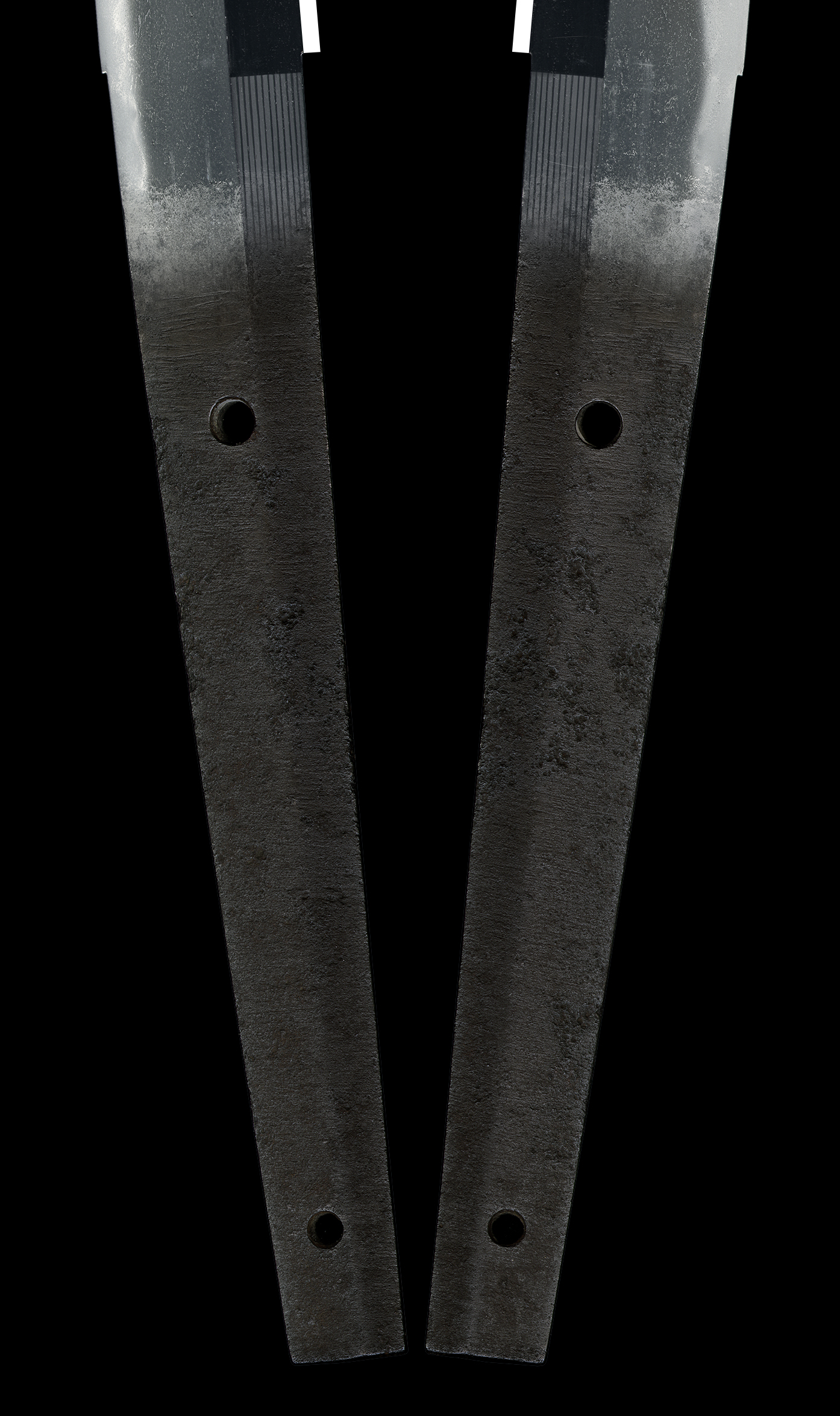Previous answer is
Mumei (attributed to Den Yamato Shizu)
無銘(伝 大和志津)
Features:There are two schools within the Shizu line: Naoe Shizu and Yamato Shizu.
Yamato Shizu is known for its dignified and calm hamon typical of the Yamato tradition, and especially for its superior jigane, which differs from Naoe Shizu.
It bears resemblance to works from the Taima school, which is favored by sword enthusiasts.
The term “Yamato Shizu” originally referred to the works made during the time when Kanenaga resided in Yamato and signed as Tsukasa before moving to Mino province.
Even after his move, smiths bearing the Tsukasa name remained in Yamato, and the term “Yamato Shizu” came to include their works as well.
This piece is an excellent example with both jigane and hamon in fine condition.
=====================================
Appraisal Quiz #840 (March 29th, 2025)
Who made this sword do you think ?
=====================================
Blade Length: 2 shaku 3 sun 6 bu (71.5 cm / 28.15 in)
Curvature: 6 bu 5 rin (1.97 cm / 0.78 in)
Mekugi Hole: 2
Width at Base (Motohaba): 3.40 cm (1.34 in)
Width at Tip (Sakihaba): 2.43 cm (0.96 in)
Thickness of rim (Kasane): 0.78 cm (0.31 in)
Sword Weight: 920 grams
Shape: The blade has a wide width (3.40 cm), thick kasane, deep curvature, and the tip features a Mitsu-Kasane Bōshi.
Jigane: The small itame-hada is well-forged and densely packed, showing utsuri, forming a finely constructed high-quality steel.
Hamon: The blade shows nioi-deki with small gunome-midare. It includes saka-ashi, a soft nioiguchi, and ashi extending toward the tip
=====================================
Answer will be posted at next Appraisal Quiz.
=====================================
(Please acknowledge not replying to mail about Appraisal Quiz by our convenience.)


